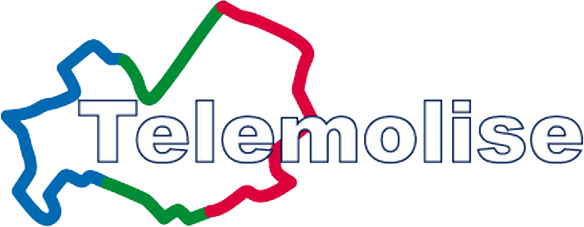http://lcotiv.com/tv/58804955957.html
Telemolise is the first private television broadcaster in Molise, both in terms of seniority and ratings, population coverage and company size. The establishment of Radio Tele Molise srl took place in 1978. It has its headquarters in Campobasso and local offices in Isernia, Termoli, Venafro.
The broadcaster is Auditel certified for checking the audience rating, with 223,773 net contacts.
The publisher, Quintino Pallante, is the same as the local Abruzzo TV6, the local Molise radio RADIO LUNA, the Giornale del Molise, and other TV stations.
The broadcaster, first of the region, was founded in Ferrazzano in 1978, by a group of small merchants from Campobasso all active in the electronics sector: Lello De Capoa, Michele De Nigris, Pietro Fatica, Raffaele Ciarlariello, Nicola Pirone. The first office is in Ferrazzano in Palazzo Chiarulli, the broadcaster radiates its programs from the UHF 55 channel, the first name is Telemolise, the company was founded a little later with the name Radio Tele Molise srl, even if in reality at the beginning it was not there is a radio broadcast, but it is limited to a cooperation agreement with Radio Lunadi Campobasso, which initially does not involve the property. The programs are broadcast through the Ferrazzano repeater which is a condition to turn on only 26% of the Molise population.On November 6, 1978 Radio Tele Molise srl is registered with the Chamber of Commerce, but already in July 1977 the first Videogiornale was broadcast, the July 13, 1977 the first advertising in Telemolise enters. The companies of Campobasso understand the potential of the new medium: it enters homes, speaks to the reunited families, enchants through movement, words, music and color. Over the years, Telemolise expands its range of action and reaches to cover the whole Region, it is the first local broadcaster in Molise and on the basis of this the motto is coined: Telemolise, a Region becomes TV. The first sports columns began on 1 September 1977. In 1978 the broadcaster moved its headquarters to Campobasso in via Colle delle Api, the first director of Telemolise was Lucio Zampino, the schedule proposes a video news, in-depth columns, programs conducted by the director Lucio Zampino, a cooking program, a cultural program conducted by a visually impaired professor, the Grand Prix quiz, football matches of the Molise teams, sports columns, the Il Giocoliere children's program, films, telefilms, documentaries, another cult program of local TV of the period that is also broadcast on Telemolise is the sports program Caccia al thirteen.
